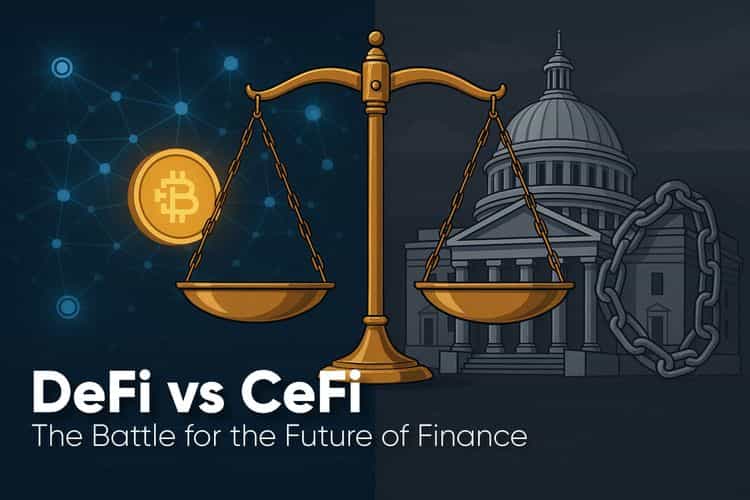The Future of Crypto Policy: Decentralization vs. Centralized Control


Cryptocurrencies have unleashed a financial revolution, empowering individuals and challenging traditional financial systems. However, with mass adoption on the horizon, the debate between decentralization and centralized control is intensifying. As regulators step in, the future of crypto will be shaped by how well freedom and oversight are balanced. Let’s explore how crypto policy has evolved and where it may lead.
Understanding Crypto Policy and Its Evolution
Crypto policy refers to the rules, regulations, and standards that govern the use, trade, and innovation of digital assets. In Bitcoin’s early days, crypto existed in a regulatory vacuum. But as the sector grew beyond enthusiasts into a trillion-dollar market, governments realized they could not ignore it. The Infrastructure Investment and Jobs Act in the United States, passed in 2021, introduced crypto-related tax reporting requirements, officially bringing digital assets into the legal framework.
"Blockchain is the tech. Bitcoin is merely the first mainstream manifestation of its potential."
— Marc Kenigsberg
This evolution signals a trend: crypto is no longer just an alternative investment; it's becoming part of the global financial system.
How Crypto Policies Have Shaped the Industry So Far?
Clear and supportive policies have often supercharged innovation. For example, Japan recognized Bitcoin as legal tender in 2017, leading to a surge in blockchain startups and crypto adoption. Conversely, restrictive environments have hurt development. China’s ban on crypto transactions and mining in 2021 led to an exodus of mining operations to more friendly countries like the United States and Kazakhstan. Thus, policy clarity acts as either a catalyst or a deterrent for crypto's growth, depending on its approach.
Key Global Events Influencing Crypto Regulations
Several landmark events have shaped global regulatory attitudes:
These incidents highlighted the risks of unregulated crypto systems, driving governments to adopt stronger regulatory roles.
Decentralization in Crypto Policy: Advantages and Challenges
Decentralization is the cornerstone of cryptocurrency philosophy. Systems like Ethereum, Bitcoin, and DeFi platforms like Rango Exchange prioritize peer-to-peer transactions without intermediaries.
Advantages:
Challenges:
Thus, while decentralization promises freedom, it demands smarter regulatory innovations rather than traditional enforcement.
Centralized Control in Crypto: Benefits and Drawbacks
Centralized crypto systems, such as major exchanges like Coinbase and Binance, offer benefits like:
However, the drawbacks are notable:
Hence, while centralized control offers a safer entry for mainstream adoption, it risks diluting the core spirit of cryptocurrencies.
The Future of Crypto Policy: Striking a Balance
Progressive jurisdictions show that balanced regulation can work. Switzerland’s "Crypto Valley" fosters blockchain innovation under clear, innovation-friendly guidelines . Similarly, Singapore’s Monetary Authority has created a licensing regime that both supports innovation and manages risks. Meanwhile, the Financial Action Task Force (FATF) is leading global efforts to standardize regulations, especially regarding anti-money laundering (AML) rules for virtual asset service providers. A balanced regulatory approach can protect consumers and markets without stifling the creative, transformative power of blockchain.

How Upcoming Policies Could Shape the Global Crypto Landscape
Future crypto policies are likely to focus on:
If properly implemented, these measures could encourage mass adoption while preserving the spirit of innovation that made crypto popular in the first place.
Conclusion
The future of crypto policy hinges on collaboration between regulators and innovators. Striking the right balance between decentralization and centralization will determine whether cryptocurrencies fulfil their revolutionary promise or become another regulated financial tool. Crypto needs smart, flexible policies that recognize its unique potential while addressing legitimate risks. In the coming years, success will depend not on choosing sides but on building a hybrid system, one that respects freedom yet ensures safety. By doing so, blockchain could move from a disruptive outsider to the backbone of a new, open financial future.
Resources
Frequently asked questions
Check out most commonly asked questions, addressed based on community needs. Can't find what you are looking for?
Contact us, our friendly support helps!
How will crypto decentralization be affected by new global policies?
New regulations will aim to improve transparency and consumer protection but could restrict full decentralization, requiring DeFi platforms to meet KYC/AML standards.
Why do governments favor centralized control over cryptocurrencies?
Centralized systems allow easier regulation, fraud prevention, fund freeze, and taxation, helping governments governments maintain economic stability and national security.
Can decentralized finance (DeFi) survive heavy regulation?
Yes, but DeFi projects will need to innovate compliance solutions like self-regulatory models or embedded identity frameworks without sacrificing decentralization principles.




